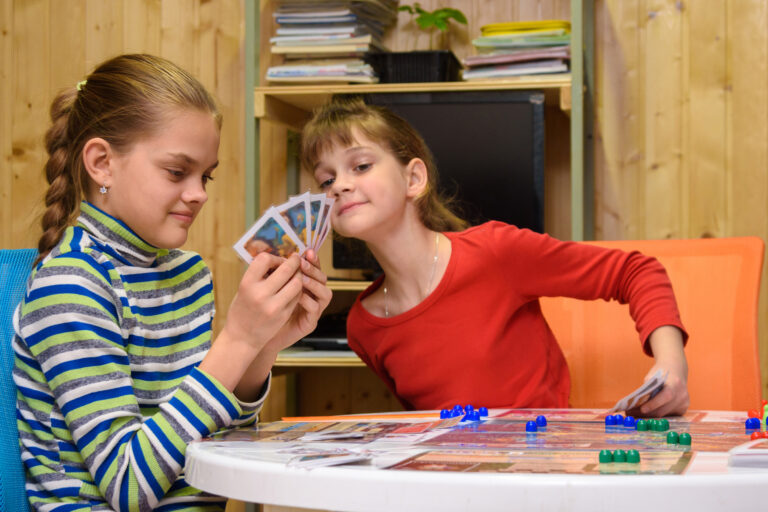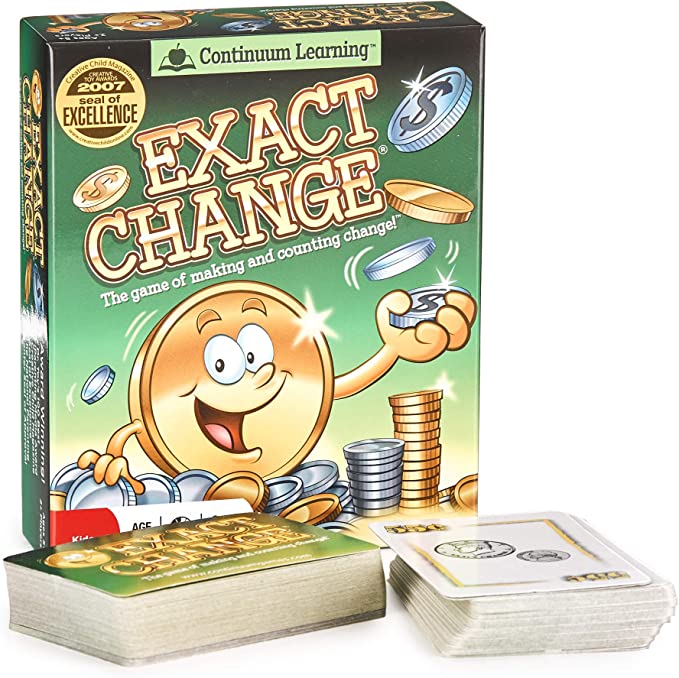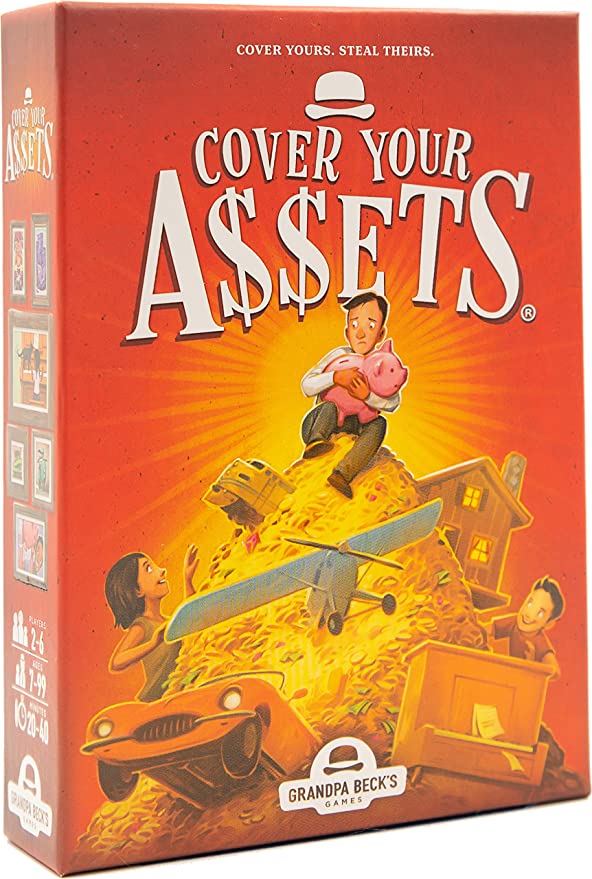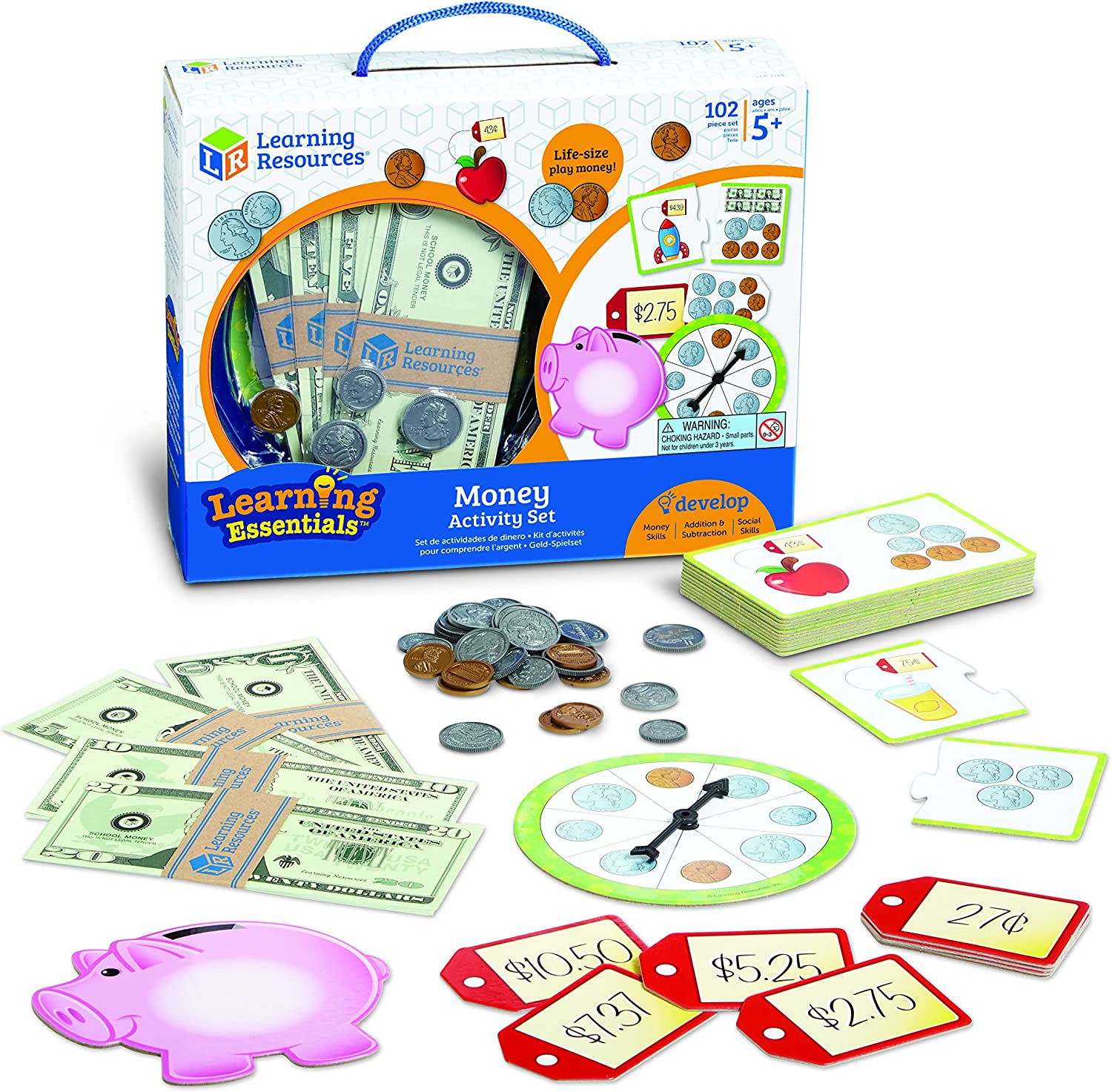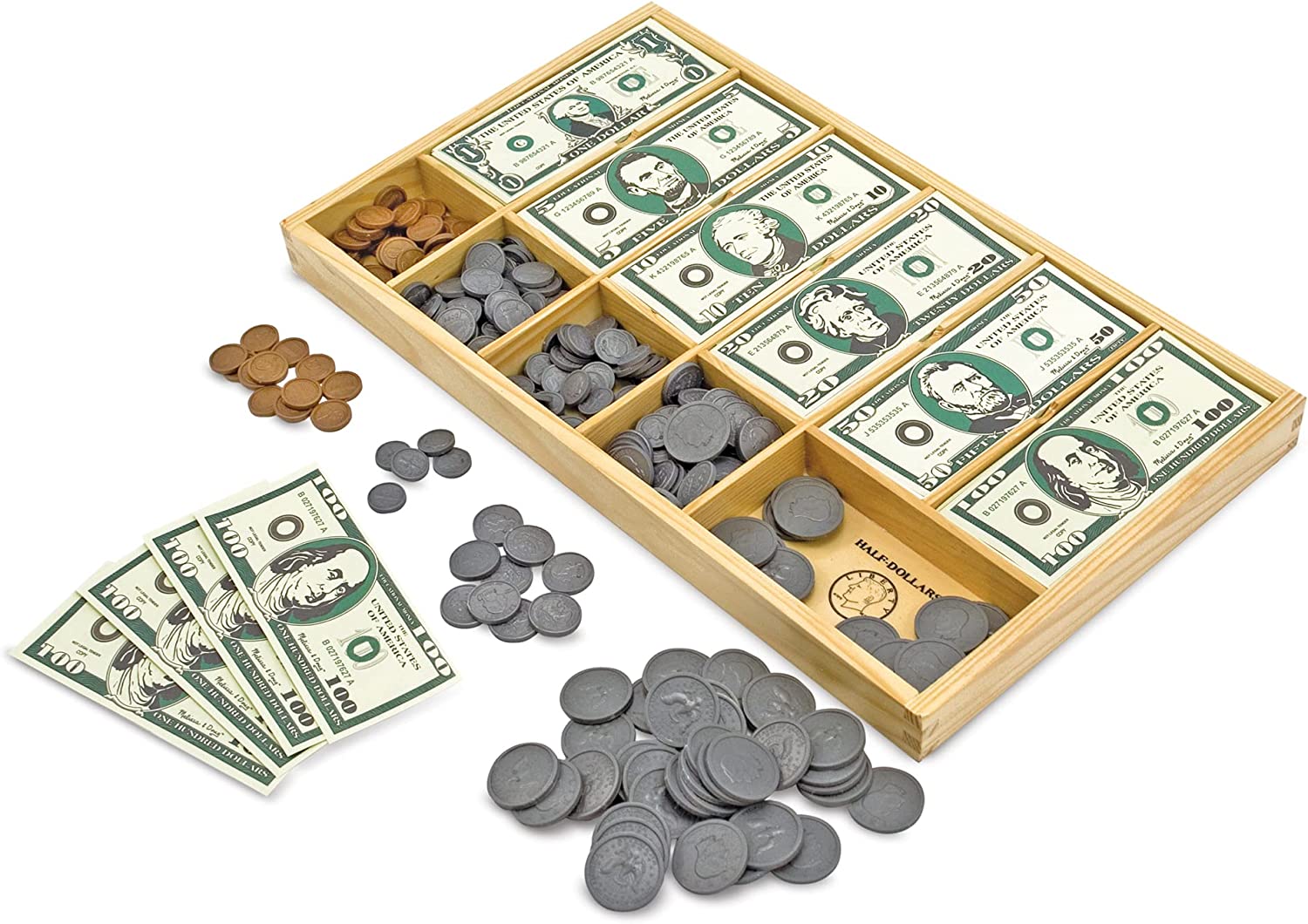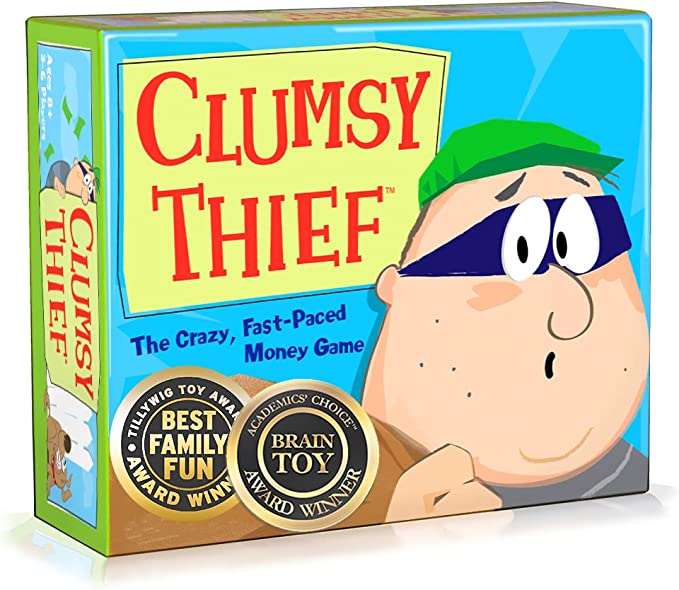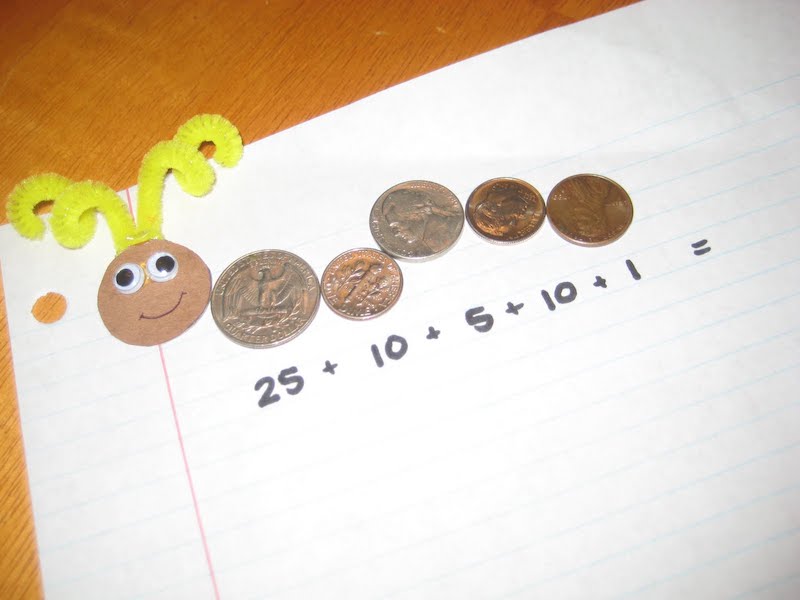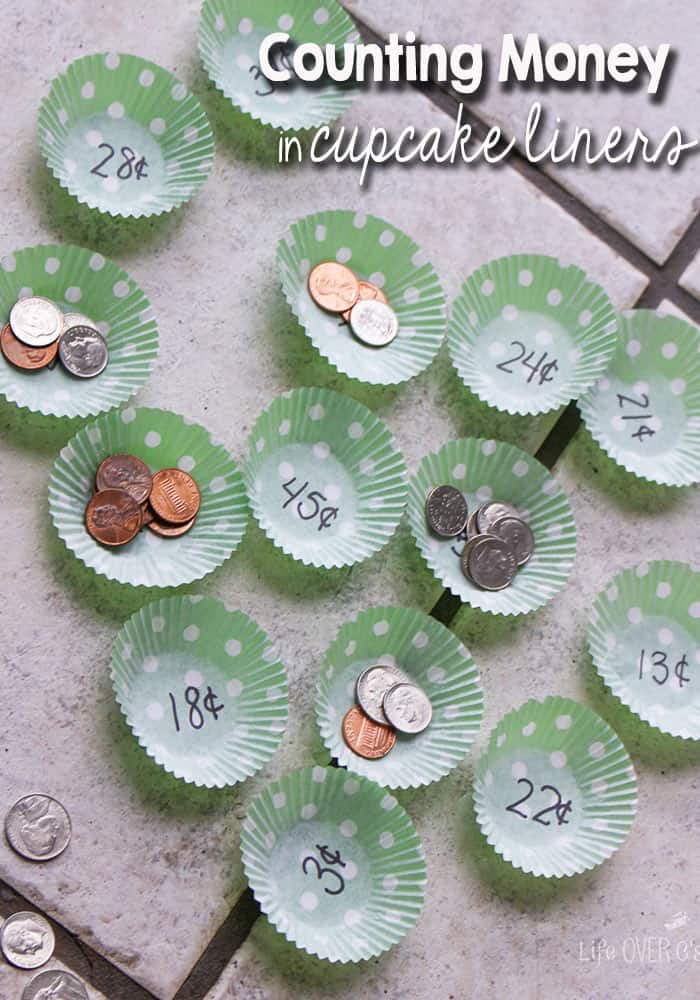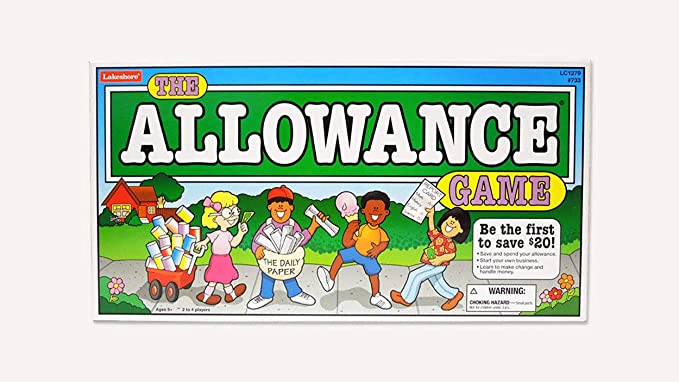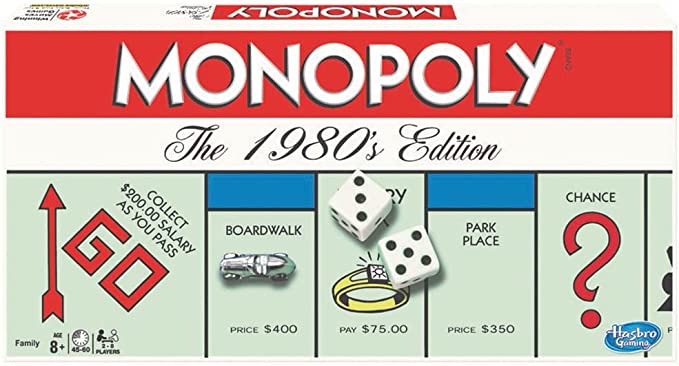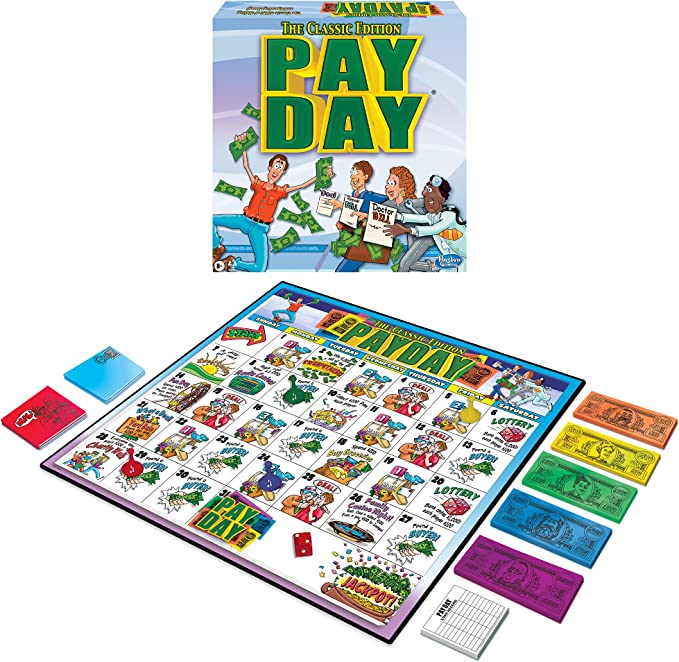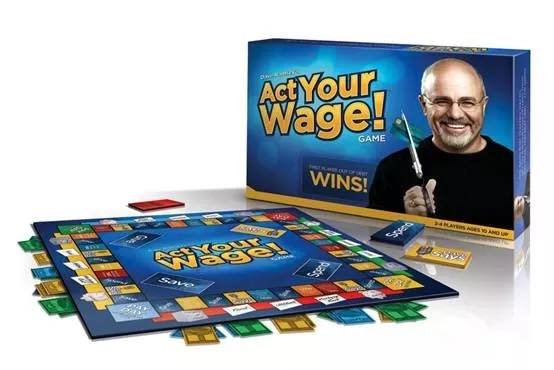Did you know that there are money activities for kids that can help your children get a good grasp on earning, saving, spending and giving away money?
Paycheck-to-paycheck living is a reality for the majority of American families. In fact, recent findings show that over 60% of those making $50k to $100k per year struggle to make ends meet.
Playing some of these money activities for kids will help them learn to manage money wisely. And they will give them some of the tools they need for a more secure financial future.
In this article, we’ll share fun money games and activities for kids from toddler age up through teenager.
Use these ideas to help your kids go into adulthood by having a good handle on healthy money management tactics.
This list of Fun interactive money games is divided into 2 sections
- Money Games and Activities for Kids – 15 options
- Best Board Games For Teaching Kids About Money – 5 options
Editorial Note: We earn a commission from partner links on My First Nest Egg. Commissions do not affect our editors’ opinions or evaluations.
Table of Contents
- 15 Fun Money Activities and Games for Kids
- 2. Cover Your Assets
- 3. Learning Resources Money Activity Set
- 4. Melissa and Doug Play Money Set
- 5. Clumsy Thief
- 6. Coin Caterpillars
- 7. Counting Coins With Cupcake Liners
- 8. Dollars and Cents
- 9. Coin Counting Eggs
- 10. Entrepreneurial Exploration
- 11. Grocery Shopping Fun
- 12. Play Housen
15 Fun Money Activities and Games for Kids
When I was growing up my family was quite poor. My single stay-at-home mom was raising three kids on $250/month in child support and help from the county welfare agency.
I resolved at a young age not to be poor and started working at 14, believing that “earning” was the way out of poverty.
But with zero financial education under my belt, my earnings flew out the window quite quickly. After some tough money lessons I had to learn as an adult, I now live a financially comfortable life.
As a parent, I was armed early with a deep desire to ensure my four kids didn’t repeat my money mistakes and vowed to ensure they knew well how to handle money before they flew the coop.
Now aged 16 through 22, my kids are good savers, wise spenders, and generous givers. And it’s largely thanks to the money activities I share with them to this day.
Believe it or not, you can find money activities for kids of all ages.
1. The Exact Change Game
Age Range:
For kids 6 and up.
Where to Buy:
Amazon and other retailers
Description:
Much like Uno, this simple card game allows you to play a card that meets one of three requirements:
- Matching the color of the last card played
- Matching the currency value of the last card played
- Making exact change
Kids and adults of all ages can enjoy this game as it teaches kids to recognize money, count change and more.
2. Cover Your Assets
Age Range:
For kids 7 and up.
Where to Buy:
Description:
This card game helps players build a tower of matching assets by completing sets of cards. However, players can steal cards as well.
You can amass assets such as automobiles, planes, scooters, buildings, gold and more. The first player to achieve a $1 million net worth is the winner.
3. Learning Resources Money Activity Set
Age Range:
For kids 5 to 8 years.
Where to Buy:
Description:
Ideal for beginner and advanced students, this money activity for kids is a set that contains flashcards, a spinner, play money, price tags and more.
Through this game, kids learn how to count money, make change, and improve addition and subtraction skills.
4. Melissa and Doug Play Money Set
Age Range:
For kids 36 months to 7 years.
Where to Buy:
Description:
Melissa and Doug has long been the gold standard for kids’ toys, and this play money set is no exception.
The sturdily built cash drawer contains 50 of each money denomination including:
- 100’s
- 50’s
- 20’s
- 10’s
- 5’s
- 1’s
And includes a full coin set as well. Kids can use the set to learn how to count money, make change, and practice entrepreneurial skills.
5. Clumsy Thief
Age Range:
For kids 8 years and up.
Where to Buy:
Description:
Melissa and Doug has long been the gold standard for kids’ toys, and this play money set is no exception.
The sturdily built cash drawer contains 50 of each money denomination including:
- 100’s
- 50’s
- 20’s
- 10’s
- 5’s
- 1’s
And includes a full coin set as well. Kids can use the set to learn how to count money, make change, and practice entrepreneurial skills.
6. Coin Caterpillars
Age Range:
For kids 3 to 8 years.
Tools needed:
Paper, marker, coins, tape
Description:
Coin Caterpillars is an easy game to play with younger children. Simply arrange coins in a wiggly line on a sheet of paper, taping them to hold them steady.
Make three or more coin caterpillars, adding legs and a face to make it fun. Then put a line under each caterpillar, and help your child count up the coins in each caterpillar to get the total dollar amount value of each one.
7. Counting Coins With Cupcake Liners
Age Range:
For kids 3 to 10 years.
Tools needed:
Cupcake liners, marker, coins
Description:
This easy game idea from Life Over C’s packs a punch when it comes to learning about money. Simply write varying dollar or cents amounts in the bottom of each cupcake liner
Hand your child a pile of coins and have them fill each liner with the correct coin combination. They’ll be learning to sort coins, and math concepts and having fun while they do it.
Step it up a notch by having two or three liners with the same monetary amount. Then tell your child to make different coin combinations for each of the same monetary amounts.
Want help giving your kids a solid financial education? Download the award-winning App that is helping parents raise money smart kids!
8. Dollars and Cents
Age Range:
For kids 4 to 8 years.
Tools needed:
Printer, printer paper, scissors, glue stick, scrapbook paper
Description:
Dollars and Cents is a printable card matching game that will teach your kids how to put together pictures of coins with their dollar value counterparts or written monetary values.
There are three sets of eight cards that come with this game. You’ll use any two sets to play the matching game.
Much like the Memory card matching games of old, kids choose two cards and try to get a match.
For instance, the cards can help kids connect that the written numbers/words of “$0.50” or “50 cents” goes with the picture of four dimes and two nickels.
If you’re looking for an extra challenge you could step it up a notch and set the rules so that kids must get all three matching cards.
This game not only helps improve memory skills, it also helps kids to connect specific coins and bills to words and numbers that represent them.
9. Coin Counting Eggs
Age Range:
For kids 5 to 10 years.
Tools needed:
Printer, printer paper, Sharpie marker, coins, plastic eggs
Description:
Coin Counting Eggs is a free printable coin counting game from Teaching With Nancy.
This free printable download game is easy to use. Simply print out the worksheets, which contain 12 pictures of one quarter, one dime, one nickel and one penny.
Then number each egg with the numbers 1 through 12. From there, write a dollar and/or cents amount on each egg. Students choose an empty egg and fill up the egg with the right coin combination to match the monetary amount that is printed on the egg.
From there, they use the worksheet to write down how many of each coin type they used to get the dollar amount on the coordinating numbered egg.
The teacher or parent can correct the worksheet to make sure that the student has the correct coin combination in each egg.
As long as the total of the coins adds up to the total on the egg, any coin combination is correct.
10. Entrepreneurial Exploration
Age Range:
For kids 5 and up.
Tools needed:
Varies
Description:
Money activities for kids aren’t just for younger children. Teaching money management skills to your child by having them run a small business is a great way to help them understand financial concepts.
You can choose any business concept from a lemonade stand to a snack bar to a garage sale.
Money concepts you can teach your kids by having them run their own business include:
- How to count money and make change
- Calculating start-up costs
- How to price in order to make a profit/profit margin basics
- Marketing and advertising
For older kids you can add in concepts such as upselling, hiring and paying employees and reducing expenses/overhead.
Bonus tip: Consider choosing retail arbitrage as your child’s business. Find items at garage sales that are underpriced and resell them at your own sale or online on eBay, Craigslist or similar sites.
11. Grocery Shopping Fun
Age Range:
For kids 8 to 18.
Tools needed:
A grocery budget, a shopping list and savvy budget wisdom
Description:
This easy activity will help your child learn the basics of smart grocery shopping. After you’ve made your weekly grocery list, take your child and head to the store.
As you shop for items, compare costs, search for alternatives and talk about the more expensive and the cheaper options. Discuss differences as well.
For instance, some generic food brands are equal to (or better than) their name brand counterparts. However, some offer subpar flavor or quality. How much can you save, and is it worth the tradeoff?
Discuss what other ways you could save money on groceries. Talk about menu planning, using leftovers and coupon shopping.
12. Play Housen
Age Range:
For kids 12 to 18.
Tools needed:
Physical or digital budget worksheets and/or spreadsheets
Description:
When my kids were old enough for money “BootCamp”, as I like to call it, they each spent several months “playing house” with the family money.
Each month when I sat down to create the budget for the month, the BootCamp kid would be right there next to me.
Planning Expenses
We’d write down what the upcoming expenses for the month were. We’d compare that to the expected income for the month.
I had the kids write down each expense for the month on the “actual” spend line that stood next to the “budgeted” spend line we’d fill in as the month progressed.
We’d compare the two and talk about whether we were “on track” or “off track” with fluid expenses such as groceries.
Planning Meals
The child would even help me create a weekly meal list and shop with me to ensure we stayed on track with our allotted weekly expenditures at the grocery store so we didn’t exceed our monthly budget.
We’d do price comparisons on products, scour the net for frugal meal ideas and more. In essence, I would have the child co-manage my money with me.
Planning Savings
We’d also talk together about how much money went into our savings categories, how much we’d give away, where we’d give it and more.
As a parent, you can make this activity last for one month, three months, six months or longer.
Although it may feel intimidating to share your personal finances with your children, it’s also a tremendous opportunity to show them how the “real world” of money works.
Bonus: Being transparent about your finances with your children gives you an opportunity to have more accountability in money management as well.
Other options include:
13. Printable Coin Sorting Mats from Kindergarten Worksheets and Games (ages 3 and up)
14. Free Printable Color the Coin Money Worksheets from 123Homeschool4Me (ages 3 and up)
15. SplashLearn Money Games for Kids This site offers online money games for kids. Learn to count money, match values and more.
Next, let’s look at some fun board games for teaching kids about money.
5 Best Board Games For Teaching Kids About Money
There are a variety of board games that teach kids of every age about money. Here are some of our favorite choices. Board games make great money activities for kids that can include friends and family as well.
1. The Allowance Game
Age Range:
For kids 5 to 11.
Where to Buy:
Amazon and other retailers
Description:
Roll the dice to land on a square which determines whether you earn money or lose it. The first player to get to a balance of $20 saved is the winner.
The game works similarly to Monopoly only with simpler concepts. Also, if you lose everything you can’t borrow–you need to go back to the beginning and start over.
2. Learning Resources Money Bags Game
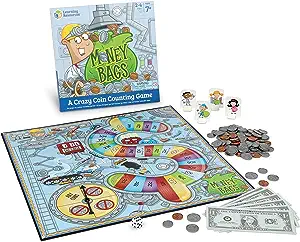
Age Range:
For kids 7 and up.
Where to Buy:
Description:
The Money Bags Game is a coin counting game where kids earn money as they move along the board.
Some of the ways they earn money include completing chores, entrepreneurship, and more. The player with the most money at the end of the game is the winner.
3. Monopoly
Age Range:
For kids 8 and up.
Where to Buy:
Description:
You can’t beat this classic game for teaching kids about money management, business and more.
Players move around the board to earn–and lose–money. Buy and sell properties, pay utilities, taxes and more.
In my humble opinion, this is one of the most educational money games around.
4. PayDay
Age Range:
For kids 8 to 12.
Where to Buy:
Description:
This classic money management board game has all of the pieces of real life money management.
You can earn money, save money, get into debt, and encounter many other real-life money management scenarios.
Even though the suggested age for this game is 8 to 12, kids, teens and adults alike can enjoy this game.
5. Act Your Wage
Age Range:
For kids 10 and up.
Where to Buy:
Amazon or Dave Ramsey’s website
Description:
Personal finance expert Dave Ramsey’s “Act Your Wage: board game has players keep Dave’s “baby steps” in mind as they move around the board.
You can save, spend and give money away as you deal with real-life scenarios such as being laid off or getting a work bonus.
Each player earns a salary and gets to decide what to do with it, as well as dealing with “unexpecteds” that come on the board.
The first person to pay off all of their debt is the winner. This game is a great lesson in “adulting”.
Summary
Using money activities for kids can help them refine a variety of skills from counting money to making change to learning entrepreneurial skills, budgeting, and more.
Explore the money games and activities listed here to help your child become financially savvy.
